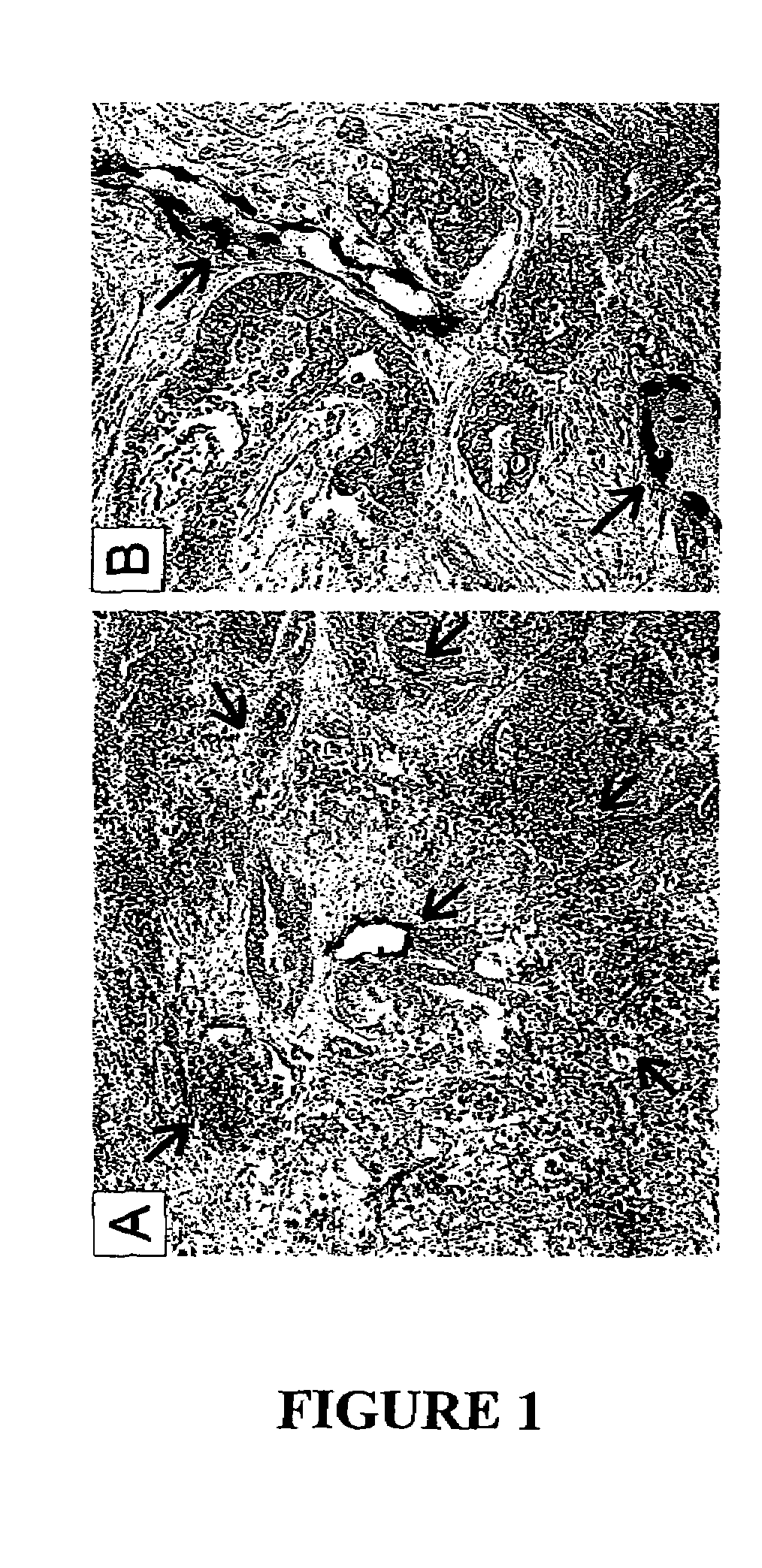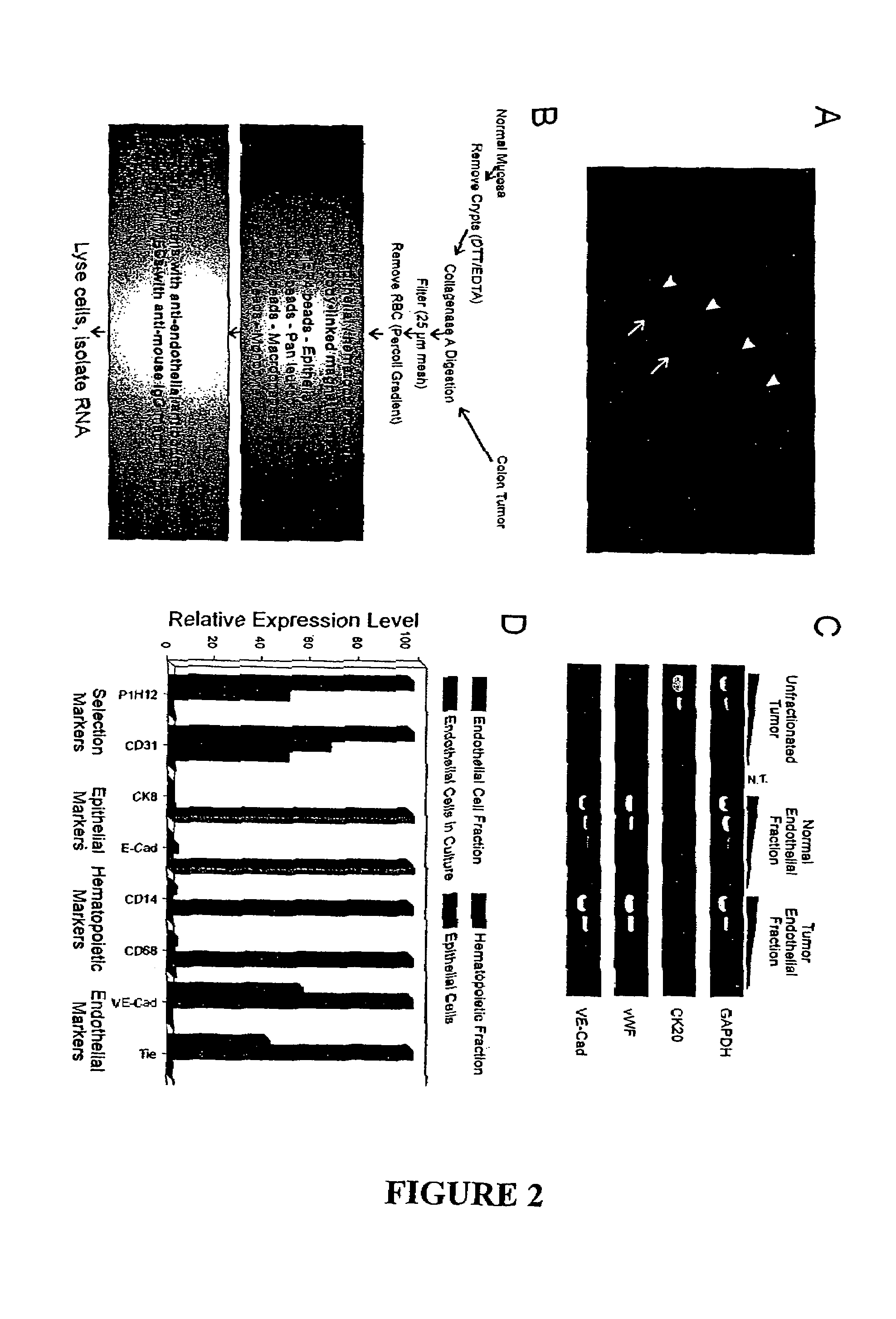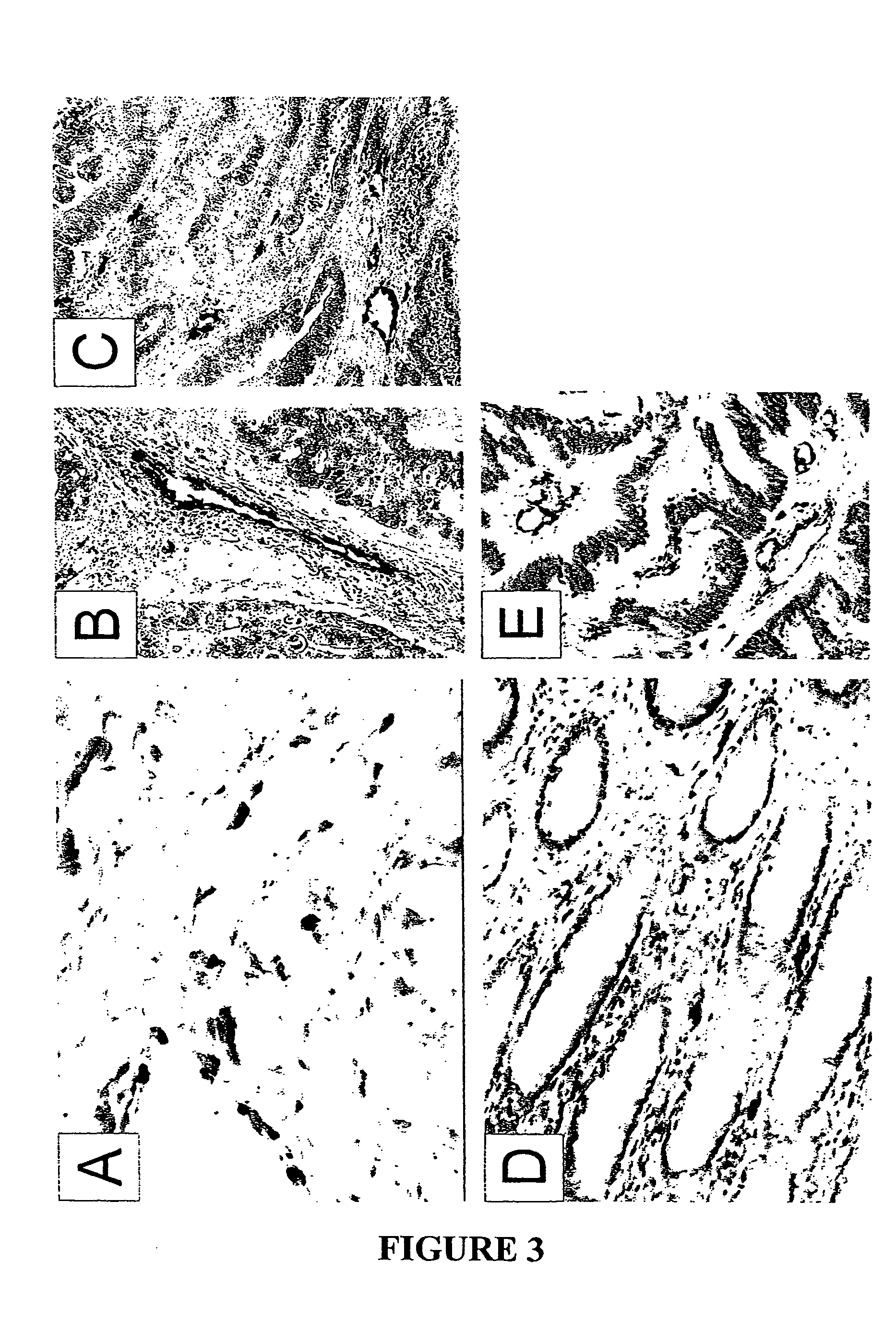Endothelial cell expression patterns
a technology of endothelial cells and expression patterns, applied in the field of angiogenesis and antiangiogenesis, can solve the problems of unanswered questions about tumor endothelium, and achieve the effect of inhibiting neoangiogenesis and increasing activity
- Summary
- Abstract
- Description
- Claims
- Application Information
AI Technical Summary
Benefits of technology
Problems solved by technology
Method used
Image
Examples
example 1
Visualization of Vasculature of Colorectal Cancers
[0125]The endothelium of human colorectal cancer was chosen to address the issues of tumor angiogenesis, based on the high incidence, relatively slow growth, and resistance to anti-neoplastic agents of these cancers. While certain less common tumor types, such as glioblastomas, are highly vascularized and are regarded as good targets for anti-angiogenic therapy, the importance of angiogenesis for the growth of human colorectal cancers and other common solid tumor types is less well documented.
[0126]We began by staining vessels in colorectal cancers using von Willebrand Factor (vWF) as a marker. In each of 6 colorectal tumors, this examination revealed a high density of vessels throughout the tumor parenchyma (Examples in FIGS. 1A and B). Interestingly, these analyses also substantiated the importance of these vessels for tumor growth, as endothelium was often surrounded by a perivascular cuff of viable cells, with a ring of necrotic ...
example 2
Purification of Endothelial Cells
[0127]Global systematic analysis of gene expression in tumor and normal endothelium has been hampered by at least three experimental obstacles. First, endothelium is enmeshed in a complex tissue consisting of vessel wall components, stromal cells, and neoplastic cells, requiring highly selective means of purifying ECs for analysis. Second, techniques for defining global gene expression profiles were not available until recently. And third, only a small fraction of the cells within a tumor are endothelial, mandating the development of methods that are suitable for the analysis of global expression profiles from relatively few cells.
[0128]To overcome the first obstacle, we initially attempted to purify ECs from dispersed human colorectal tissue using CD31, an endothelial marker commonly used for this purpose. This resulted in a substantial enrichment of ECs but also resulted in contamination of the preparations by hematopoietic cells, most likely due t...
example 3
Comparison of Tumor and Normal Endothelial Cell Expression Patterns
[0129]To overcome the remaining obstacles, a modification of the Serial Analysis of Gene Expression (SAGE) technique was used. SAGE associates individual mRNA transcripts with 14 base pair tags derived from a specific position near their 3′ termini. The abundance of each tag provides a quantitative measure of the transcript level present within the mRNA population studied. SAGE is not dependent on pre-existing databases of expressed genes, and therefore provides an unbiased view of gene expression profiles. This feature is particularly important in the analysis of cells that constitute only a small fraction of the tissue under study, as transcripts from these cells are unlikely to be well represented in extant EST databases. We adapted the SAGE protocol so that it could be used on small numbers of purified ECs obtained from the procedure outlined in FIG. 2B. A library of ˜100,000 tags from the purified ECs of a color...
PUM
| Property | Measurement | Unit |
|---|---|---|
| length | aaaaa | aaaaa |
| TEM | aaaaa | aaaaa |
| soluble | aaaaa | aaaaa |
Abstract
Description
Claims
Application Information
 Login to View More
Login to View More - R&D
- Intellectual Property
- Life Sciences
- Materials
- Tech Scout
- Unparalleled Data Quality
- Higher Quality Content
- 60% Fewer Hallucinations
Browse by: Latest US Patents, China's latest patents, Technical Efficacy Thesaurus, Application Domain, Technology Topic, Popular Technical Reports.
© 2025 PatSnap. All rights reserved.Legal|Privacy policy|Modern Slavery Act Transparency Statement|Sitemap|About US| Contact US: help@patsnap.com



